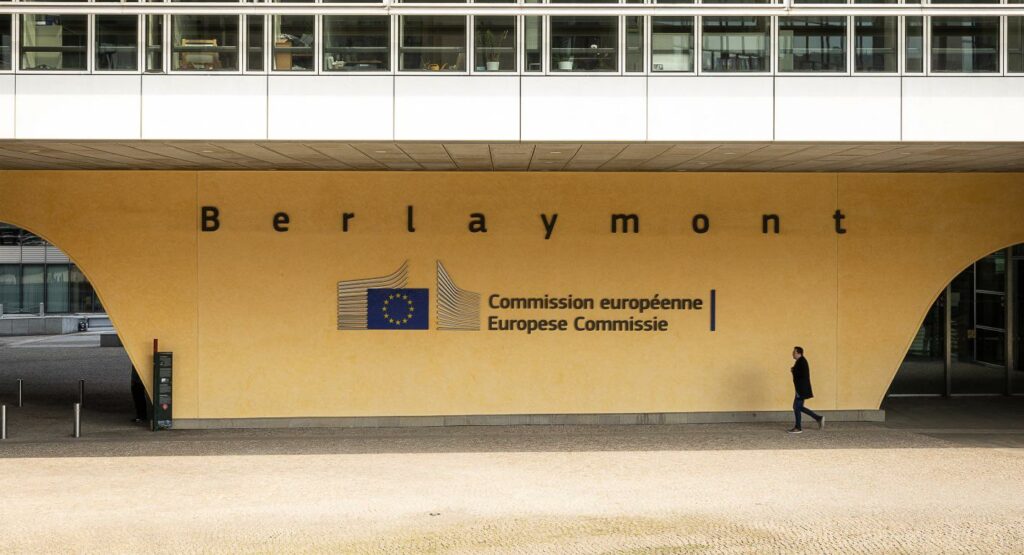The EU has failed to significantly reduce persistent spending errors in its cohesion policy and the control system is not working as intended, according to a review report published on Monday by the European Court of Auditors (ECA) – the EU’s financial watchdog.
EU’s cohesion policy aims at reducing social and economic disparities within the EU and is a major spending area in the EU budget. It accounted for €409 billion or over one-third of the total budget in 2014-2020 and is forecasted to increase to over 42 % in the current budget period, 2021 – 2027.
Besides the cohesion fund, it includes two structural funds, the European Regional Development Fund (ERDF) and the European Social Fund (ESF). In its annual assurance reports, the ECA has consistently observed that cohesion funding suffers from higher error rates than other budget areas.
How high? Well above 2%, the materiality threshold, according to the auditors. In its latest annual report on the 2022 EU accounts, the ECA concluded that the overall level of errors in non-recovery post-COVID spending had increased to 4.2 %. Two-thirds of the audited expenditure was considered high-risk, such as the cohesion fund with an estimated level of error of 6.0 %.
As in the last four years, the auditors concluded that the level of error was material and pervasive and issued an adverse opinion on the EU’s spending in 2022. The European Commission begs to differ and refers to its statistics in the Annual Activity Reports.
The ‘residual’ error refers to the errors that the Commission has adjusted following its own checks. For the 2020-2021 accounts, it estimated the residual total error rate in the shared management with the EU member states to 1.9 % and a maximum 2.7 % due to further risks under investigation. The ECA considers the maximum error rate closer to reality but it is not used as the Commission’s main indicator.
The ECA applies a similar error concept since 2017, the additional error rate, which refers to the errors which were not detected and corrected by the Commission and the member states in their control systems. Until then, the ECA says that it had relied too much on the so-called single audit approach, where each layer in the control system is relying on the checks and audits by the previous layer to save work.
Where is the final error rate heading?
In its response to the new ECA report, the Commission sticks to its opinion. A Commission spokesperson told The Brussels Times that its control approach allows it to estimate a ‘risk at closure’ well below the materiality threshold of 2% for each programme, once all additional corrective actions have been implemented. For the whole 2014 – 2020 programme, the error rate is estimated at 1.3% at closure.
Does the ECA believe that the final error rate will be reduced? “The calculation is based on several estimations and corrections yet to be made,” the audit team replied. “There are good reasons to check the figures after the closure of the programmes.”
The final expenditure declarations were supposed to be submitted by mid-2024. To ease the administrative pressure on the Member States in reprogramming funds, the deadline for the submission of the claims has been extended until the end of July 2025. The deadline for the submission of closure documents has been extended to February 2026.
Normally national, regional or private co-financing is required in cohesion funding but the condition was removed during the COVID crisis to increase the absorption of the funding. Did it result in a higher error rate? The ECA did not audit the impact of the change but remarked that it went against a long-standing principle in safeguarding EU funding and should remain a temporary exception.
The Commission welcomed “the ECA’s conclusion that the 2014-2020 assurance framework contributed to reducing the overall error level in comparison to the 2007-2013 period” but that is not the main conclusion in the report. While the error level did decrease in 2014 – 2020, the multiannual error rate for 2014-2020 was found to be 4,8 %, which is too high.
Broken lines of defence

ECA member Helga Berger, credit: ECA
“The Commission and the Member States work hand in hand to deliver EU Cohesion policy benefits to citizens, but they must make a greater effort to ensure that spending follows the rules,” said Helga Berger, the Austrian ECA Member responsible for the review. She is a former director-general at Austria’s finance ministry and has worked in managerial positions at the country’s Court of Audit.
“When we talk about controls, there are many players in the field, but the results are simply not there,” she says.
In an interview with The Brussels Times, she described the internal control system as not working and not fit for purpose. The ‘lines of defence’ in the system, in the form of the managing/certifying authorities and audit authorities in the Member States, in combination with the Commission’s own desk checks and compliance audits, are broken.
“The Commission underestimates the overall error level but agrees that some operational programmes in cohesion funding are materially affected by error,” she said. “All lines of defence need to be improved. The internal control system is built as a pyramid of checks by the Member States and the Commission but the latter remains ultimately responsible for the control system also in shared management.”
Despite the ECA’s annual reports showing an overall error rate above 2 %, the European Parliament regularly grants discharge to the Commission. Why? She did not seem surprised and explained that the discharge decision to approve the implementation of the budget was based on the management of the overall EU budget and not only cohesion funding.
The Commission and the ECA agree that methodological differences can explain part of their different estimates of the error rate. The Commission is of the opinion that only irregularities that will lead to financial corrections should be included in the estimate of the error rate. It is convinced that its position would withstand scrutiny before the Court of Justice in case it will be challenged there.
The ECA has a wider definition and includes not only ineligible expenditure, which easily can be quantified, but all breaches of EU and national legislation, including state aid and procurement rules. It analysed for the first time the root causes of errors, such as intentional non-compliance by beneficiaries, inefficient verifications by managing authorities and lack of documentation by the audit authorities.
A typical audit authority is a public body but the task has also been outsourced to private audit firms. More seldom, the task is performed by the supreme audit institution. Helga Belger is critical against the overreliance of many of the audit authorities on the self-declarations by the beneficiaries. “We found a lack of substantial documentation in the audits by the audit authorities,” she summarized.
Can the single audit approach be trusted?
Despite the shortcomings identified by the ECA, the Commission continues to rely on a single audit approach. “This targeted approach minimises the duplication of audit work and the related administrative burden on different stakeholders, taking into account audits performed by national audit authorities,” according to the Commission spokesperson.
The two Commission directorates- general directly responsible for the control system, DG Regio (Regional & Urban Policy) and DG Empl (Employment, Social Affairs & Inclusion) established a joint audit directorate in July 2021. How is it performing?
The Commission’s desk checks are not designed to detect additional errors. A rebalance of resources with more compliance audits on the spot would be more effective. The ECA mentioned the new directorate’s work on financial corrections but observed that they have no deterrent effect on the Member States. On a positive note, the average time to follow up errors decreased for cases with no corrections.
Usually the ECA focuses on estimating error rates by spending areas and not by EU Member States but in this review it made an effort to highlight the error rate on Member State level. Nine Member States (Poland, Italy, Spain, Portugal, Hungary, Czechia, Romania, Greece, Germany) are responsible for 76 % of the cohesion funding and over 90 % of the estimated error level, according to the report.
The review report is mainly based on previous audit work and publicly available information but the audit team reviewed a sample of programmes. In half of the audited assurance packages the error level exceeded the materiality threshold of 2 %.
The audit team found that all nine countries besides Poland have an error rate above 2 %, with Spain, Portugal and Germany contributing most to the overall error rate. This level of country-based insight is only possible over a multi-year period, whereas to do so on an annual basis maybe an army of auditors would have been needed.
The ECA review reports do not include specific recommendations for the Commission to accept or not but the general conclusion in the report is that the assurance framework for 2021 – 2027 needs to be strengthened. Helga Berger, the ECA member, points out that specific recommendations can be extrapolated from the report.
M. Apelblat
The Brussels Times

